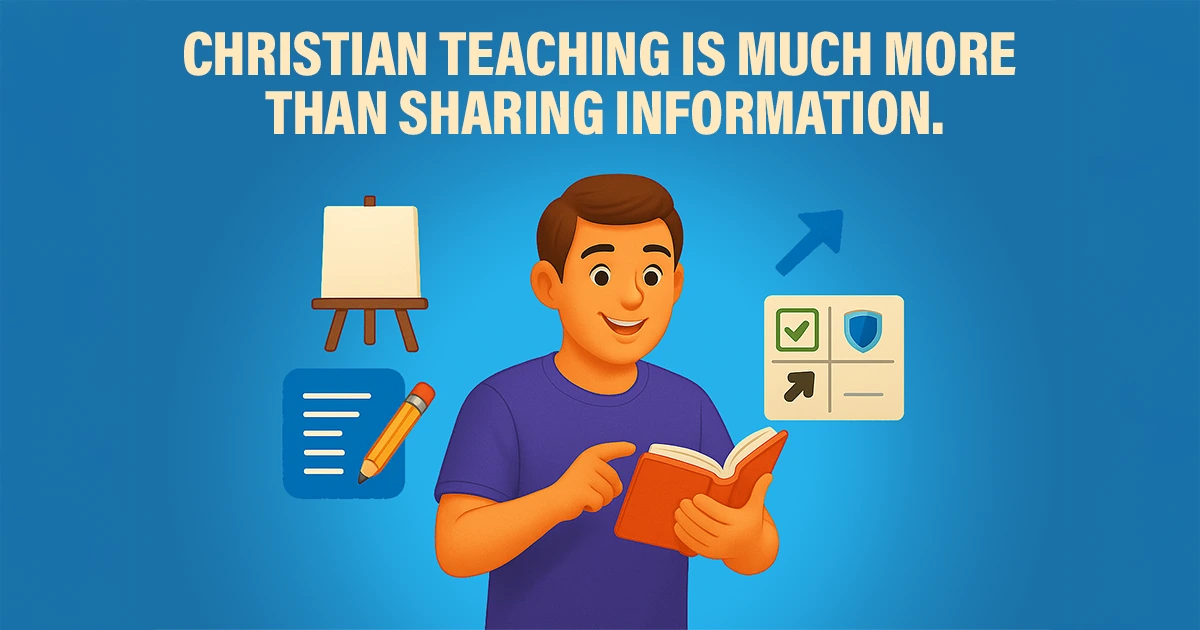It’s about shaping hearts, cultivating values, and igniting a desire to live according to God’s Word. That’s why, beyond creative resources, we also need teaching methods that connect with different learning styles and developmental stages of our students.
Here are 10 additional ideas, inspired by modern teaching techniques successfully used by innovative educators, now adapted for Sunday school. You can use them with children, preteens, or youth (ages 8 to 20), depending on the level.
1. 📝 Project-Based Learning (PBL)
PBL promotes active learning by placing the student at the center of the process. In Sunday school, you can apply this method by encouraging students to develop a thematic project. For example, create a “Fruit of the Spirit” campaign for the church or build a “City of Values” model. This fosters research, teamwork, planning, and presentation skills.
2. 🧣 Flipped Classroom
This method reverses the traditional model: students explore the content at home through videos, readings, or devotionals, and class time is used for discussion, problem-solving, games, or role-plays. This develops critical thinking and independence. You can create simple videos or use downloadable devotionals.
3. 🔍 Learning Stations
Divide the class into “stations” or “corners,” each offering a different activity: Bible reading, application games, art, and prayer/reflection. Students rotate in small groups, promoting collaboration and accommodating various learning styles. This keeps energy levels high and enhances overall understanding.
4. 🧲 Creative Notebook or Spiritual Journal
Assign each student a special notebook to promote metacognition. They can use it to record what they’ve learned, write prayers, draw what they understood, or paste key Bible verses. This becomes their personal spiritual growth journal and a powerful introspective tool.
5. 🔍 Visual and Graphic Learning
Many young people process information better visually. Use charts, mind maps, diagrams, and drawings to explain parables, genealogies, or biblical principles. You can also ask them to create their own visual summaries of what they’ve learned. This stimulates abstract thinking and improves retention.
6. 🎉 Gamification (points and rewards)
Turn learning into a game: create scoreboards, weekly challenges, missions, “wisdom levels,” or “unlocking Bible characters.” Rewards can be symbolic (stickers, certificates, privileges). This not only increases motivation but transforms the class into an unforgettable experience.
7. 🤗 Co-Teaching (Student as Teacher)
Assign a student each week to prepare and teach a portion of the class. This builds leadership, responsibility, and engagement. Support them with preparatory materials and allow them to use visual or creative resources. Others will see they too can be instruments of teaching.
8. 🪐 Role Playing: Questions in Character
Ask open-ended questions where students take on biblical roles. For example: “How would you feel if you were Peter after denying Jesus?” or “What would you say today to someone like Joseph?” This develops empathy, connects with emotions, and brings Bible stories to life.
9. 🌍 Global Connection
Relate biblical messages to current news, social issues, or community events to help contextualize faith. For example, when studying the Good Samaritan, connect it to topics like bullying or helping those in need. This reinforces the relevance of the Bible today.
10. ✅ Visible Thinking Routines
Use strategies like:
- “I used to think / Now I think”
- “I observe / I wonder / I understand”
- “This reminds me of…”
These sentence starters help students organize their thoughts, express their learning, and discover deeper connections. You can write them on posters and use them at the end of each class.
✨ Materials that support these ideas…
Many of these teaching methods work even better when combined with ready-to-use materials—like Bible emoji cards, lesson plans, activities, and printables. There are digital kits that gather all these resources in one place, designed to make your work as a Christian educator easier—such as the one you can find here:
If you’re working with young people and need fresh, practical tools, this type of resource can make a significant difference in your classes.
✉️ Save this article, share it with other teachers, and try one of these ideas in your class this week.

